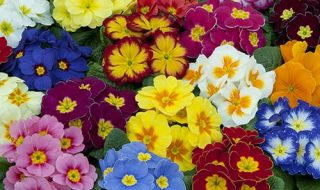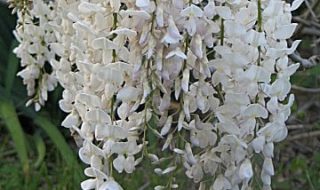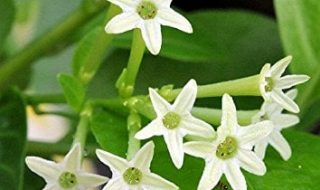What could be more pleasing than an evening in your garden, which is surrounded by the beautiful scent of night bloomers? If you are planning for a moon garden, you must include some of the night bloomers. They not only give your garden a pleasant look but will fill it up with their intoxicating aroma. Here is a list of 12-night bloomers for your moon garden.

Our busy schedule and work make us wonder how to enjoy our garden when we return home after a very long day. A moon garden with night bloomers will solve that problem. There are many night bloomers to choose from that will provide hours of relaxing nighttime enjoyment. Popular 12-night bloomers for moon gardens include
Evening Primrose (Hardy Perennial)

Little beauties with sweet smells, bloom in early spring, and blooming lasts throughout the summer. They are available in a variety of colors, such as white, cream, yellow, orange, blue, purple, red, and pink. These perennial plants prefer damp, woodland-like conditions. They are easy to grow from seeds; cuttings can also be taken from some varieties during the summer.
Gardenia Augusta (Perennial)

Plant Gardenia augusta in your garden and enjoy its fragrance in the daytime as well as at night. They are more fragrant at night. With proper car care, they can live for years.
Brugmansia (Tender Perennial)

Angel’s Trumpet, these are large, fragrant pendulous flowers. Brugmansias are tropical trees, but they can easily grow in cold climates. Can be easily grown in containers. They come in shades of white, yellow, pink, orange, green, or red. Most have a strong, pleasing fragrance that is most noticeable in the evening.
Moon Flower (Annual)

These are perennial vines in sub-tropical areas but can be successfully grown in cold winters as annuals. These large white and purple blooms offer an amazing evening smell to your garden. Moonflowers do not need much ground space as they climb upwards and, therefore, can be planted in large containers.
Japanese Wisteria (Perennial)

A woody vine, which may take several years to bloom, is capable of growing to a height of 35 ft. They can be found in many colors, like white, pink, blue, pale violet, and deep violet. They are noted for their exceptional smell.
Tuberose (Tender Bulb)

They produce tall flower spikes with numerous tubular bulbs. Ideally suited for warm weather, give your tuberoses plenty of sun to get their beautiful blooms with a fragrance that is rich and seductive.
Night Phlox (Annual)

If you are planning an evening fragrance garden, Night Phlox can be a good addition. Night phlox blooms in shades of white, purple, and maroon. They can be grown in large containers as well as on the ground. They need adequate sunlight during the day, and they attract bees, birds, and butterflies.
Nicotiana (Annual)

They are commonly referred to as tobacco plants and are cultivated as ornamental plants. They have tubular or trumpet-shaped flowers that open in the evening and night, releasing their fragrance. They come in shades of green, white, red, and pastels.
Night Blooming Jasmine (Tender Perennial)

Lady of the Night is a night bloomer with an intoxicating fragrance. It grows best in partial to full sun. Night-blooming jasmine grows 8–10 feet tall. It bears clusters of small white-green flowers from spring through summer. If you have night-blooming jasmine in your garden, you won’t need any other night bloomers. It will fill your garden with its intoxicating fragrance.
Four O’Clocks (Annual)

The bloom time of Four O’Clocks is said to correspond to changes in light and temperature, so they open in the cool of the evening, usually between about four and eight p.m., or a bit earlier on cloudy afternoons. Their abundant, trumpet-shaped blooms may be bright yellow, white, magenta, or wonderfully striped or splashed with pink, orange, or yellow. Sometimes several flower colors can be seen on the same plant. The flowers are fragrant, with a scent that is both lemony and sweet, and hummingbirds and moths are attracted to them.
Datura (Tender Perennial)

All species of Datura are poisonous, especially their seeds and flowers. They are commonly known as daturas, but they are also known as the devil’s trumpets. The trumpet-shaped, fragrant flowers can be white, yellow, pink, or purple.
Matthiola longipetala

It is primarily grown for its evening scent. It does well in cool conditions and may not do well in high temperatures. Flowers open in the late afternoon and evening and emit a delightful fragrance. They are well worth adding to the garden.
Follow INCPAK on Google News / Facebook / Twitter / Instagram for updates.

















